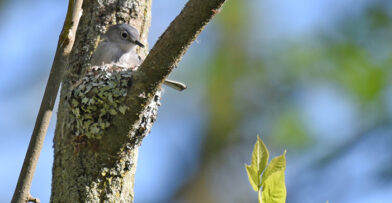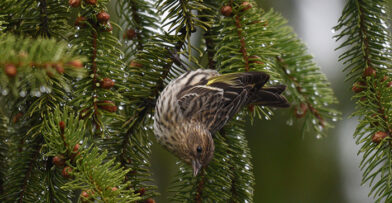Spring Migration has an established rhythm. Thanks to birders, naturalists, and citizen scientists from the past (whether 49 years ago, or even last year’s data), we have records for the Center of birds arriving, and can predict pretty easily when things should arrive.
We know from past years that our earliest migrants come at the end of March starting with Golden-crowned Kinglet, Fox Sparrow, and Red-winged Blackbird. April brings a wave of sparrows including, Swamp Sparrow, White-throated Sparrow, and Field Sparrow.
Our first warbler species in Wisconsin is reliably the Yellow-rumped Warbler. The Pine Warbler, Northern Waterthrush and Palm Warbler are usually not too far behind.
Magical Moments
But the magic of spring migration is that despite these established rhythms, nature IS unpredictable, creating moments of joy and excitement for those paying attention.
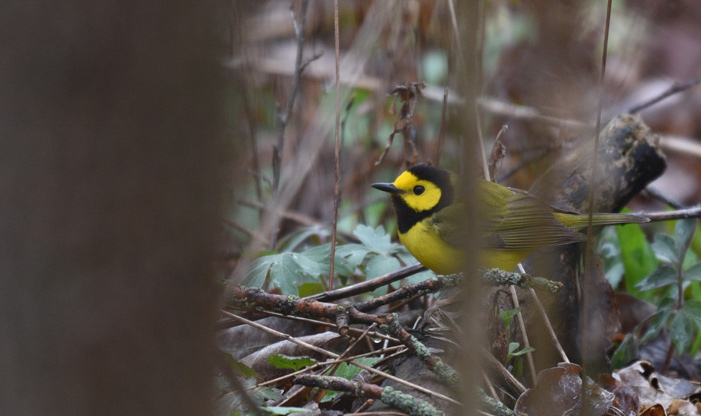
Hooded Warbler, Setophaga citrina, a rarer bird for the Center, especially in late April.
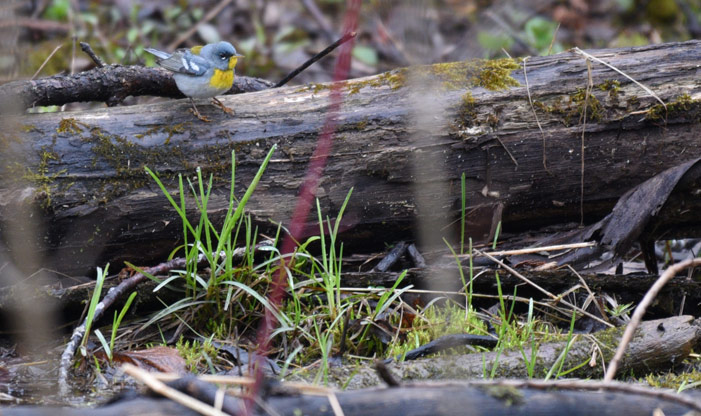
Northern Parula, Setophaga americana, a neotropical migrant birders were elated to see this week.
This week, as I was birding with my friends, a tiny flash of bright yellow and blue caught my eye. Once we were on the bird, we realized we were viewing a Northern Parula. This species usually shows up in early May. And moments after that, a flash of yellow and black appeared nearby, and suddenly we are all stammering “Hooded Warbler!” Hooded Warblers are a rare treat for the Center each migration, so we were especially floored to see one so early in the year.
And even the “normal” birds that are seen the whole year can create wonderment. A leucistic American Robin has been hanging around the Center. So although we see robins all of the time, the unique pale pattern of this individual has captivated visitors.
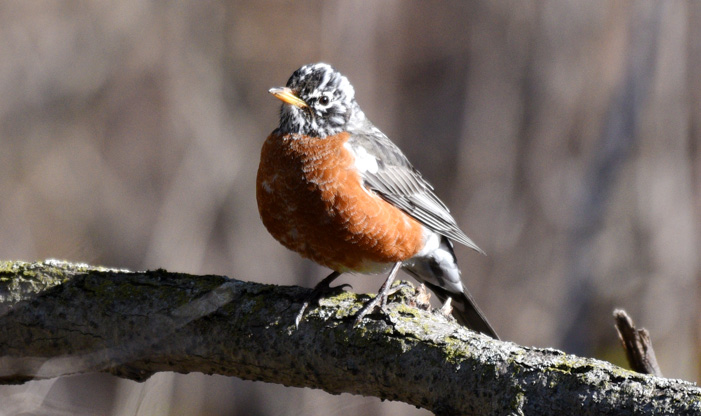
A leucistic American Robin, Turdus migratorius. Leucism is a condition of partial pigment loss. These white spots are not usual for robins.
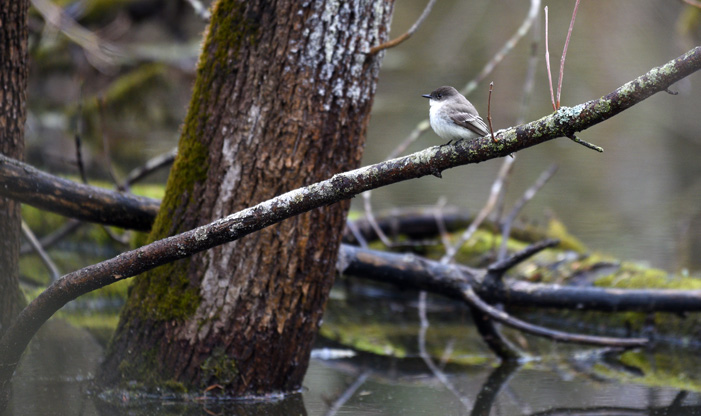
Eastern Phoebe, Sayornis phoebe, defending territory near Boardwalk Pond.
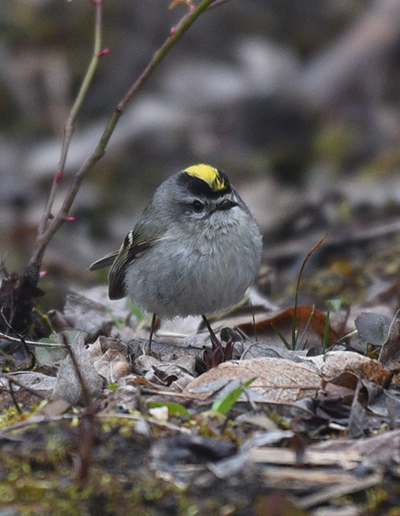
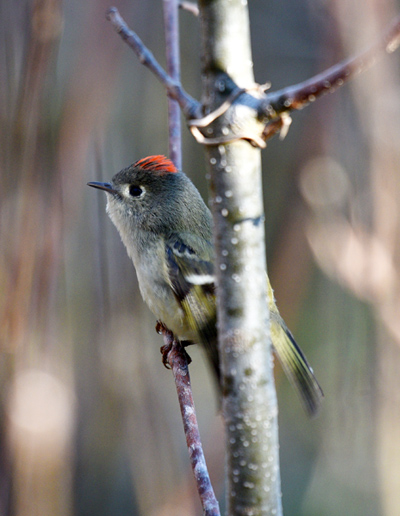
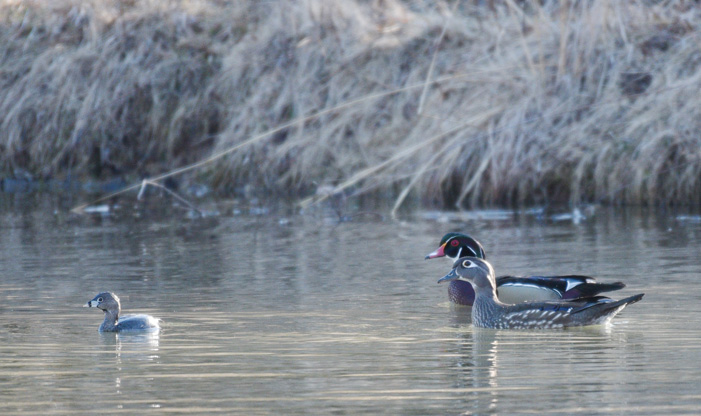
A female and male Wood Duck, Aix sponsa, with a Pied-billed Grebe, Podilymbus podiceps, on Mystery Lake. Seeing species like this together is helpful because size differences are much easier to visualize in the field when you have something to compare with.
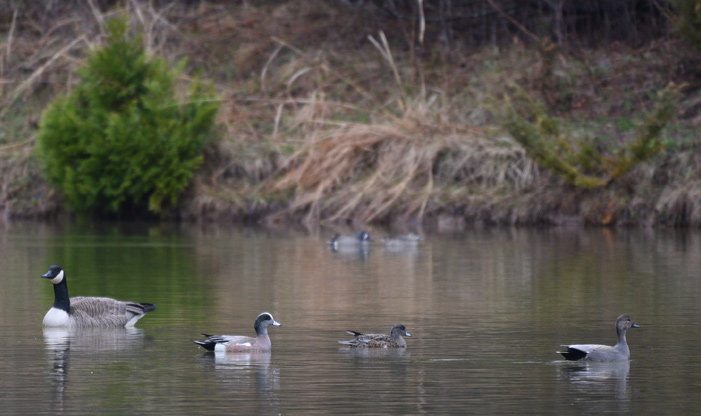
Canada Goose, Branta canadensis, American Wigeon, Mareca americana, Gadwall, Mareca strepera, and Blue-winged Teal, Spatula discors, are all seen in this one photo, taken on Mystery Lake.
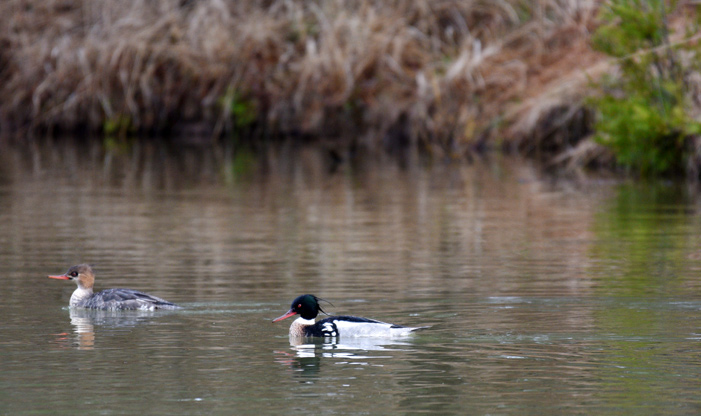
Female and Male Red-breasted Merganser, Mergus serrator, a diving duck.
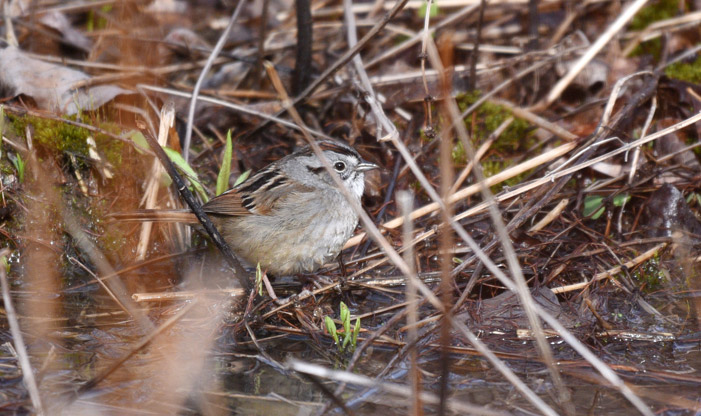
Swamp Sparrow, Melospiza georgiana, a shy sparrow who likes to skulk in marsh grasses and brush piles.
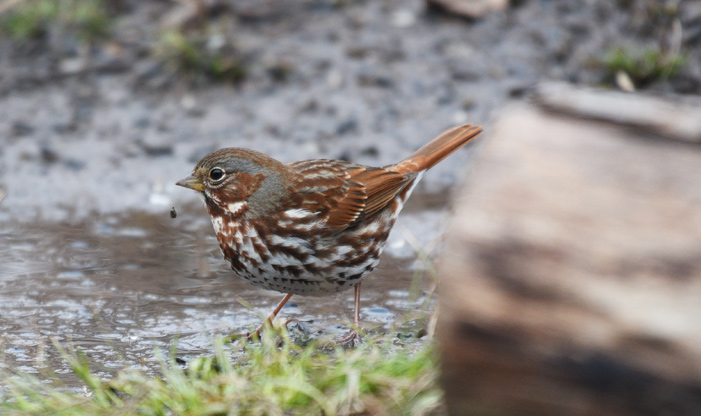
Fox Sparrow, Passerella iliaca, an early migrant. Most of this species has already continued further north!
The Center is a great place for birdwatching, and spring migration is turning up new surprises each day. Visit this week, and discover the magic of spring migration for yourself!
